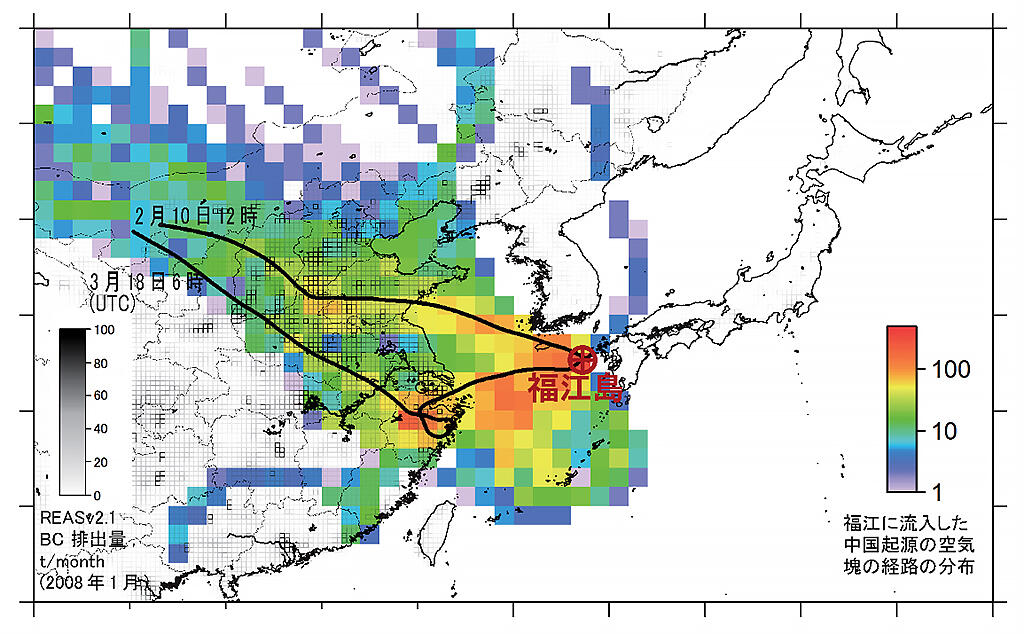The Japan Agency for Marine-Earth Science and Technology (JAMSTEC) Research Institute for Global Change Earth Surface System's Research Center Director Yugo Kanaya and research group, in collaboration with Kobe University, National Institute for Environmental Studies, Research Organization of Information and Systems National Institute of Polar Research, and several partner institutes, succeeded in clarifying that the black carbon (BC: soot) emitted from China is currently emitted primarily from households.
The fundamental solution to the problem of global warming requires reduction in emissions of all warming substances, not only CO2. BC particles are also a target, and efforts to reduce their emissions in China, which is a major source, are important. The research group noted that only certain sectors were affected in the efforts to prevent the spread of the novel coronavirus infection (COVID-19), and the emission balance changed significantly; therefore, quantitative observational data before and after the pandemic were compared, and the origin of emissions was roughly divided into the "household sector" and "industry/transport sector". To date, studies have shown that the amount of BC released from China has decreased by 40% in the past 10 years until 2019. However, the amount of emissions per capita remains approximately three times that of Japan.
In this study, the BC concentration observed from February to March 2020 was revealed, and the average value obtained was 0.471 μg per cubic meter. There was no significant change compared to the results observed in the 15 to 19 years before COVID-19 (0.416-0.648 μg per cubic meter). However, the BC concentration observed at the Fukuejima Atmospheric Environment Observatory in Nagasaki Prefecture depends on the influence of the wind blowing from China, which is the source.

Provided by JAMSTEC
The obtained results were compared with the estimated values obtained after excluding the influence of the wind, which was termed "model concentration." If emissions from China had not changed, the value in 2020 would have been higher than that in 2019. However, the BC concentration, which is considered to be the actual emission in China calculated from the model concentration, decreased by 18% in 2020 from that in 2019. This was assumed to be a result of lockdown measures implemented in February-March 2020 to prevent the spread of COVID-19. Comparing the "industry sector", which is considered to be the major source of emissions in China, the "transport sector" and "household sector" of automobiles, another study has reported that activity in the "industry sector" and "transport sector" decreased by 50%. Calculations after incorporating this result revealed that in the 19 years before the spread of COVID-19, the amount of BC emitted from the "industry/transport sector" was 36% and the remaining 64% was from the "household sector".
It was concluded that the reason emissions in 2020 were only 18% lower than those in 2019 was that household coal consumption was not affected even under lockdown, and that emissions from the "household sector" accounting for BC emissions were largely involved. Director Kanaya said, "The nature of impact that BC has on climate change in the Arctic region, where global warming is extremely rapid, is an important issue. Therefore, to evaluate the overall impact by incorporating BC emissions and relevant processes is a major achievement of this study. However, it is not fully understood how much BC is washed away from the atmosphere owing to clouds and precipitation when BC is transported in the atmosphere for thousands of kilometers. In the future, we will evaluate the transportation and removal process along with the observational data of the oceanographic research vessel 'Mirai' and the observational results over a wide area of the Arctic, such as Alaska and Russia. We want to clarify the movement of BC in the entire world as a progression from emissions to impacts."
This article has been translated by JST with permission from The Science News Ltd.(https://sci-news.co.jp/). Unauthorized reproduction of the article and photographs is prohibited.




